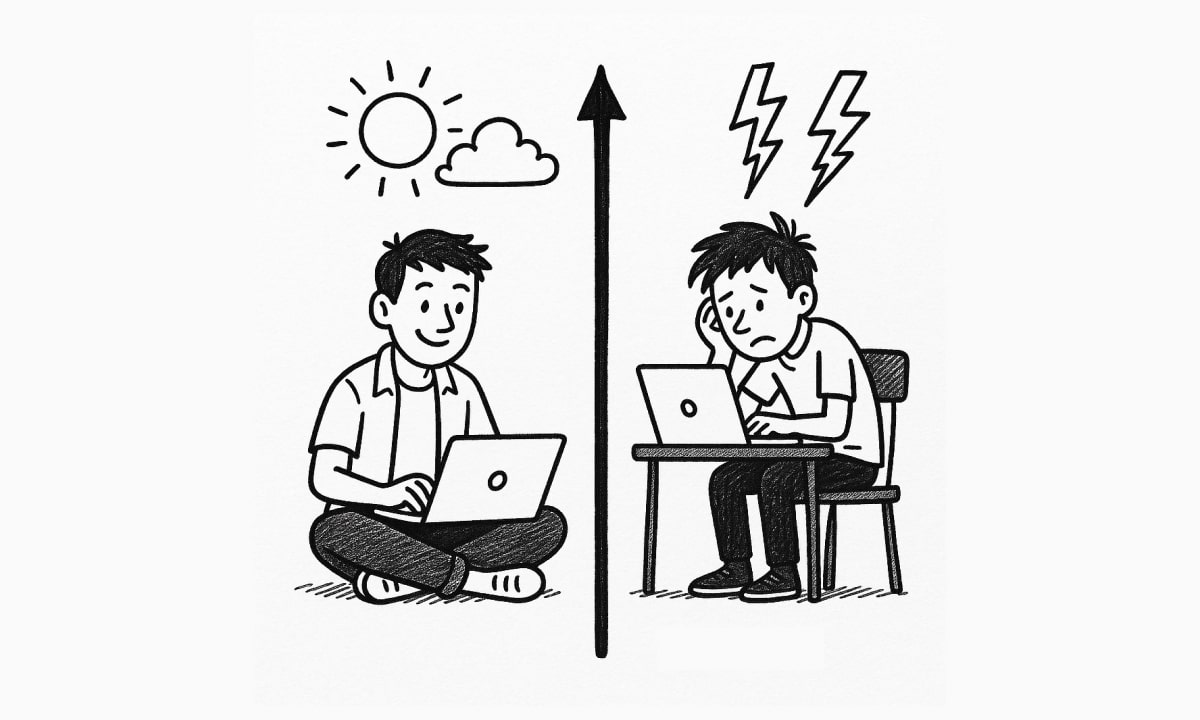Imagine waking up to the hum of a new city, your laptop perched on a café table, the aroma of fresh coffee mingling with the buzz of possibility. For Sarah, a 32-year-old graphic designer from Chicago, this is no daydream—it’s her life as a digital nomad in America. She traded her cubicle for a life of movement, working from vibrant hubs like Austin, serene mountain towns in Colorado, and coastal gems like San Diego. But as exhilarating as her journey sounds, it is not all Instagram-worthy sunsets and seamless Wi-Fi. The digital nomad lifestyle, especially in the U.S., is a complex tapestry of freedom and challenges, woven with trade-offs that demand careful consideration.
In 2024, over 18 million American workers identified as digital nomads, a 147% surge since 2019, according to MBO Partners. This lifestyle, enabled by remote work and technology, allows individuals to work from anywhere with a stable internet connection, blending professional ambition with wanderlust. But what does it truly mean to be a digital nomad in America? Through Sarah’s story and a detailed exploration of the pros and cons, this post unpacks the allure and realities of this transformative way of life, offering insights for dreamers, skeptics, and decision-makers alike.
The Pros: Freedom, Flexibility, and Opportunity
1. Unparalleled Freedom and Flexibility
The digital nomad lifestyle is synonymous with freedom. Unlike traditional office jobs, nomads like Sarah can choose their workplace—be it a coworking space in Miami, a national park with Starlink Wi-Fi, or a bustling New York café. This flexibility extends to schedules, allowing nomads to work when they’re most productive, whether that is at dawn or midnight.
For Sarah, this meant aligning her work with her passions. During a stint in Asheville, North Carolina, she spent mornings hiking the Blue Ridge Mountains, then tackled design projects in the afternoon. “It’s like designing my life, not just my workday,” she says. According to a 2022 global survey by Statista, 25% of remote workers cited flexibility to work from any location as the top benefit, underscoring its universal appeal.
This freedom isn’t just personal—it’s strategic. Decision-makers in companies embracing remote work can tap into a distributed workforce, accessing talent without geographic constraints. Nomads, in turn, can explore America’s diverse landscapes, from urban jungles to rural retreats, without sacrificing career growth.
2. Cost-of-Living Control Through Geo-Arbitrage
America’s vast size offers a unique advantage: dramatic variations in cost of living. Digital nomads can practice “geo-arbitrage,” earning a salary pegged to high-cost cities like San Francisco while living in more affordable areas like Boise, Idaho, or Chattanooga, Tennessee. For example, the median rent for a one-bedroom apartment in San Francisco is $3,200, compared to $1,200 in Boise, per Zillow.
Sarah leveraged this by basing herself in Tucson, Arizona, where her $1,500 monthly rent for a modern apartment was half what she paid in Chicago. The savings allowed her to invest in professional development courses, boosting her freelance rates. MBO Partners notes that 46% of digital nomads report household incomes of $75,000 or more, partly due to such cost optimizations.
For organizations, this trend signals a workforce that can thrive without expensive urban office spaces, potentially reducing overhead. For nomads, it’s a financial superpower, stretching budgets and enabling a higher quality of life.
3. Cultural and Personal Growth
America’s diversity—geographic, cultural, and social—makes it a playground for personal growth. Digital nomads immerse themselves in varied communities, from the tech-driven optimism of Silicon Valley to the soulful rhythms of New Orleans. Each stop offers new perspectives, skills, and connections.
Sarah’s time in Santa Fe, New Mexico, introduced her to local artisans, inspiring a new design aesthetic that landed her a high-profile client. “Every city feels like a new chapter,” she says. A Nomad List survey found that 79% of digital nomads are early tech adopters, often using their travels to stay competitive by learning from diverse environments.
This exposure fosters adaptability, a trait prized by employers and entrepreneurs alike. Nomads develop resilience navigating new cities, from mastering public transit in Boston to securing reliable Wi-Fi in rural Montana. These skills translate to workplaces, where adaptability is increasingly critical in a fast-changing economy.
4. No Commute, More Time
Commuting is a relic for digital nomads. The average American spends 27.6 minutes commuting one way, per the U.S. Census Bureau, totaling over 230 hours annually. Nomads reclaim this time, redirecting it toward work, hobbies, or exploration.
Sarah used her “commute-free” hours to learn Spanish in preparation for a project with a Latin American client. For businesses, this efficiency can translate to higher productivity. A 2021 study by Owl Labs found that remote workers report being 22% more productive than their office-bound counterparts, partly due to time savings.

The Cons: Challenges That Test Resilience
1. Loneliness and Isolation
The open road can be lonely. Constant movement disrupts stable social networks, leaving nomads to rebuild connections in each new city. Sarah recalls a month in Portland, Oregon, where she struggled to find community. “I was surrounded by people, but felt invisible,” she says. MBO Partners reports that 15–17% of digital nomads transition back to traditional lifestyles annually, often citing isolation as a factor.
Coworking spaces and co-living communities like Outsite help, but they come with costs—financial and emotional. Building meaningful friendships takes time, and nomads often leave just as bonds form. For decision-makers, this highlights the need for remote work policies that foster virtual community, such as regular team check-ins or hybrid meetups.
2. Unreliable Infrastructure
A digital nomad’s lifeline is the internet, but America’s connectivity is uneven. While urban centers boast high-speed Wi-Fi, rural areas and even some mid-sized cities can be spotty. Sarah once lost a client deadline in a remote Wyoming town when her café’s Wi-Fi crashed for a day. A 2023 FCC report notes that 7.2% of Americans lack access to broadband speeds of at least 100 Mbps, a challenge for nomads venturing off the beaten path.
This unreliability can disrupt workflows, straining client relationships or team dynamics. Companies must invest in robust remote infrastructure—think VPNs and backup connectivity solutions—to support nomadic employees. Nomads, meanwhile, often carry portable hotspots, but these add costs and complexity.
3. Bureaucratic and Financial Headaches
Navigating taxes and paperwork as a digital nomad is like assembling a puzzle with missing pieces. Constant movement complicates tax residency, health insurance, and banking. Sarah, for instance, struggled to maintain a consistent mailing address, causing delays in receiving tax documents. Nomad Capitalist emphasizes the importance of a “base” address for legal and financial stability, but establishing one requires planning.
Health insurance is another hurdle. Nomads often face high premiums for plans that cover multiple states, and accessing care in unfamiliar cities can be daunting. A 2024 Kaiser Family Foundation report highlights that 13% of remote workers lack adequate health coverage, a gap that hits nomads hard.
For businesses, this underscores the need for clear policies on tax compliance and benefits for remote workers. Nomads must master time management and financial planning, skills that, while valuable, demand significant effort.
4. Work-Life Balance Struggles
The flexibility that defines digital nomadism can blur boundaries between work and life. Without a physical office to “leave,” nomads like Sarah sometimes overwork, especially in inspiring settings that tempt procrastination. “I’d explore a city all day, then scramble to meet deadlines at night,” she admits. A 2023 study by Buffer found that 24% of remote workers struggle with unplugging, risking burnout.
This challenge extends to employers, who must foster cultures that prioritize well-being over constant availability. Nomads, meanwhile, need discipline to set boundaries, a skill honed through trial and error.
Sarah’s Story: A Balancing Act
Sarah’s journey mirrors the digital nomad experience: exhilarating yet demanding. After two years, she’s learned to mitigate challenges—using coworking spaces to combat loneliness, investing in a portable hotspot for connectivity, and hiring a virtual assistant to handle paperwork. Yet, she’s also reaping rewards: a portfolio enriched by diverse influences, a network spanning coasts, and a life that feels authentically hers.
Her story is an analogy for the lifestyle itself—a road trip with breathtaking views and unexpected detours. Each stop teaches resilience, adaptability, and gratitude, but the journey requires preparation and self-awareness. For decision-makers, Sarah’s experience highlights the potential of a nomadic workforce: creative, agile, and global-minded. For aspiring nomads, it’s a call to weigh the pros against the cons with eyes wide open.
Conclusion: Is Digital Nomadism in America for You?
Being a digital nomad in America is like sailing a vast ocean—thrilling, with endless horizons, but fraught with storms. The pros—freedom, cost savings, growth, and time efficiency—offer a compelling case for those craving a life unbound by routine. Yet, the cons—loneliness, infrastructure woes, bureaucracy, and balance struggles—demand resilience and strategy.
For the general public, this lifestyle is an invitation to rethink work and life, to see America not just as a home but as a canvas. For decision-makers, it’s a signal to adapt: embrace remote work, invest in connectivity, and support employees’ well-being. As MBO Partners projects 60 million global digital nomads by 2030, America’s role as a nomad hub will only grow.
Sarah’s still on the road, her laptop now open in a Seattle coworking space, dreaming of her next stop. Her story, like the digital nomad lifestyle, is unfinished, full of possibility and challenge. Will you join her on the journey, or cheer from the shore? The choice is yours—but know the map before you sail.
You might also like: How to Stay Motivated When You’re Job Hunting for Months









